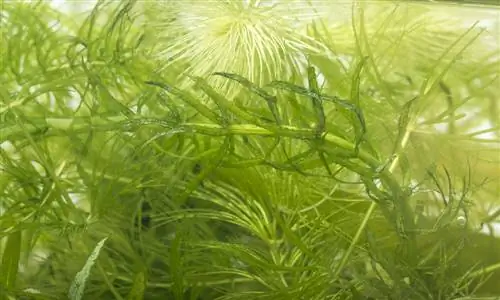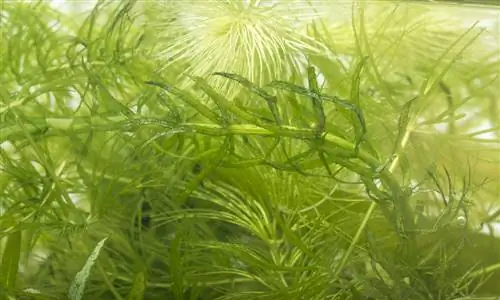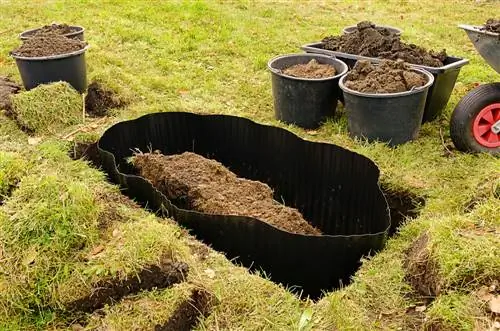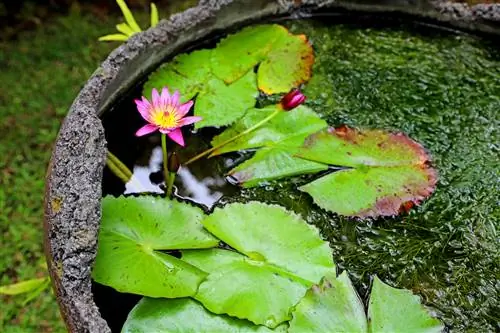- Author admin [email protected].
- Public 2023-12-16 16:46.
- Last modified 2025-01-23 11:22.
Waterweed is a thoroughly useful plant. No pond should be without them. It also fulfills useful functions in the aquarium. But one of their characteristics can cause us a lot of work: their strong desire to reproduce. Hornwort can help us reduce their numbers.

How does hornwort help against the proliferation of waterweed?
Hornwort and waterweed are competing plants. When both are present in the pond, hornwort takes up nutrients and space, reducing the waterweed's rate of reproduction. This creates a natural balance and helps control the spread of waterweed.
Enormous urge to reproduce
Under ideal conditions, more than 500 new specimens will form from a single waterweed planted in the pond after just four months. It is obvious that regular “cleaning out” is required. The time involved could tempt some pond or aquarium owners to forgo waterweed altogether.
Useful properties
Before you say no to waterweed, you should perhaps also know its positive properties.
- takes nutrients away from the algae
- prevents algal blooms
- stays green even in winter
- supplies the water with oxygen all year round
In addition, waterweed is tolerant of fluctuations in water temperature and thrives in practically any pond and at any time.
Hornwort as a companion
Hornwort, often called hornleaf, and waterweed are two competing plants. Where hornwort grows, waterweed cannot spread unchecked. After all, a place that has already been taken cannot be given a second time.
These two plant varieties don't just fight for space. Both also require plenty of nutrients. Hornwort, as a heavy consumer, leaves less for waterweed, so this fact alone contributes to a lower reproduction rate.
Coexistence is possible
Hornwort only suppresses waterweed to a certain extent. It will never completely destroy them. If both stay in a pond, a natural equilibrium will be achieved after a certain period of time. So it is possible for both species to coexist at the same time.
A successful combination
The fact that both plants find their place in the pond is an ideal situation. The pond continues to benefit from the beneficial properties of waterweed. This prevents algal blooms and the water is well supplied with oxygen. At the same time, the propagation problem is largely solved by planting hornwort.
By the way, you can also use hornwort against algae. It grows quickly and deprives them of their breeding ground. If you need more callus, you can simply multiply it by dividing it.
Tip
Hornwort is also suitable for deep ponds. You can plant it up to a depth of 1.5 m






